#chilch
Explore tagged Tumblr posts
Text

Bookmark Design I made up for Dungeon Meshi. The dungeon scroll is the front is Falin on the back inspured by that one scene in the first opening of Laois sinking through blood.
I'm honestly so very happy how this turned out. Enjoy
#dungeon meshi#delicious in dungeon#laois touden#laois dungeon meshi#marcille donato#marcille dunmeshi#chilchuck#chilchuk dungeon meshi#chilch#lious#marcille#senshi#senshi dungeon meshi#red dragon#kelpie#mimic#golum#mushrooms#swordy#kensuke#falin touden#falin dungeon meshi#bookmark
2K notes
·
View notes
Text
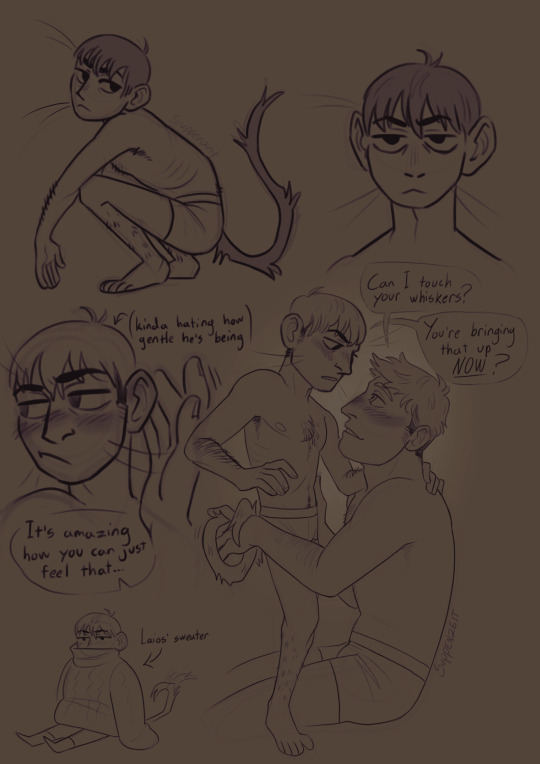
chilch with whiskers feat. chilaios
#my art#dungeon meshi#dunmeshi#chilaios#im making chilch such a little creature. did you know he can purr too#laios knows half-foots can purr and silently loses his mind when chilchuck finally does it around him#also: chilchuck was expecting laios to pull on his whiskers so hes pleasantly surprised#little does he know laios is hyperaware of how sensitive they are
248 notes
·
View notes
Text
do you ever just get so overwhelmed with love for a character that you cant even bear to look at them because you might spontaneously combust
#.......so i was reading the dungeon meshi extras and chilch-#yeah whatever im emotional about him SO WHAT !!!!!!!
7 notes
·
View notes
Text
@holmsister


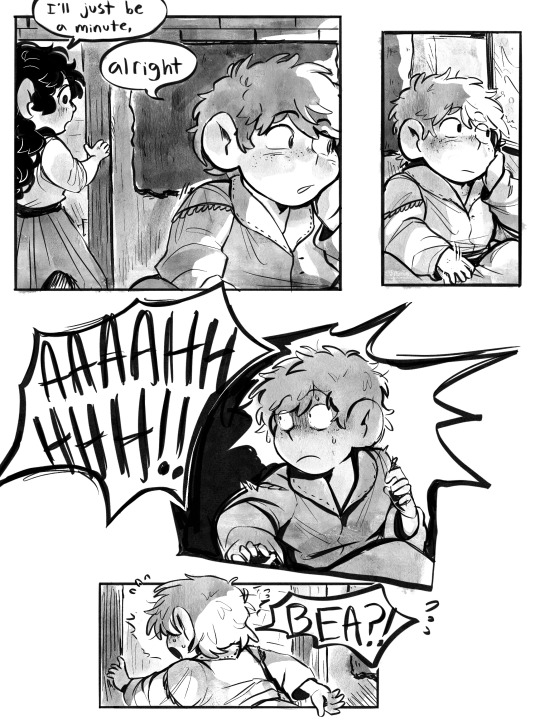
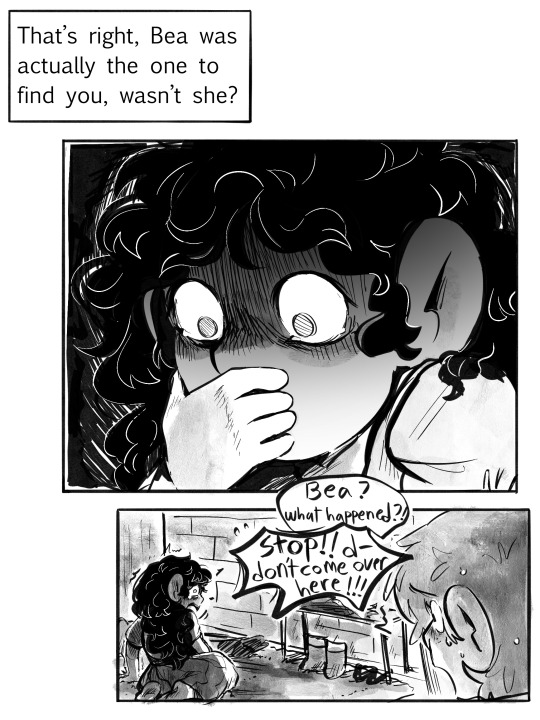
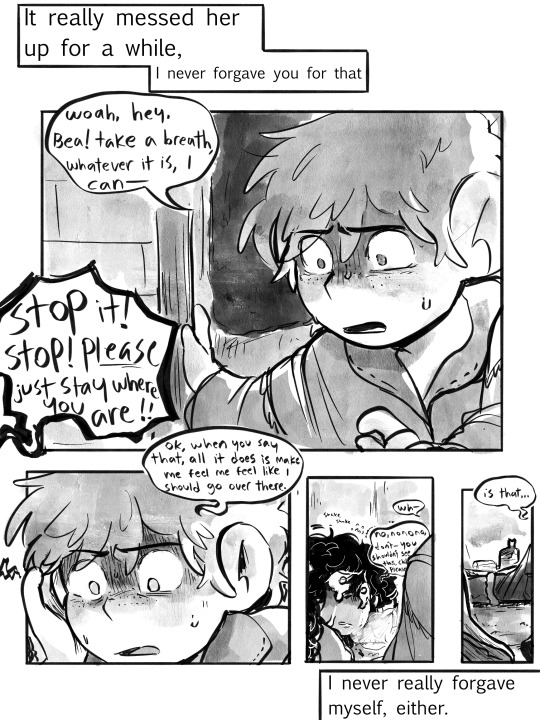
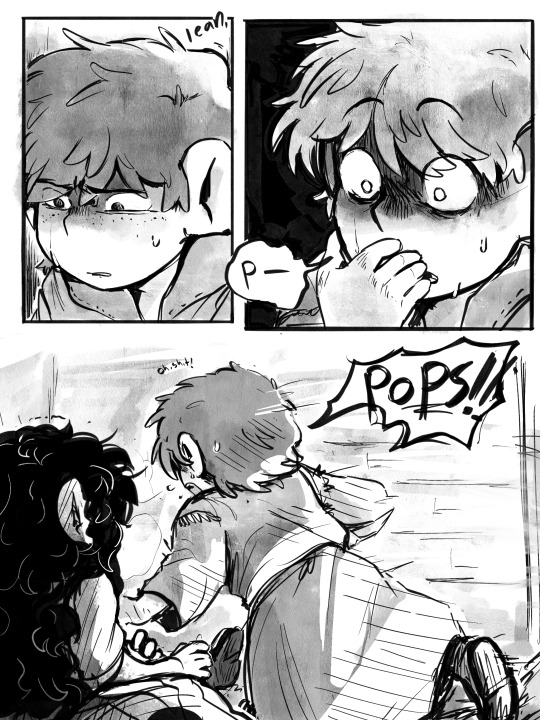


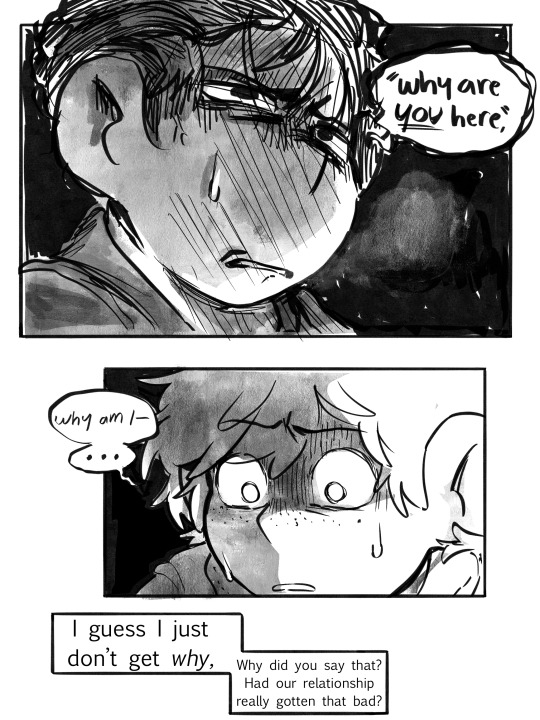
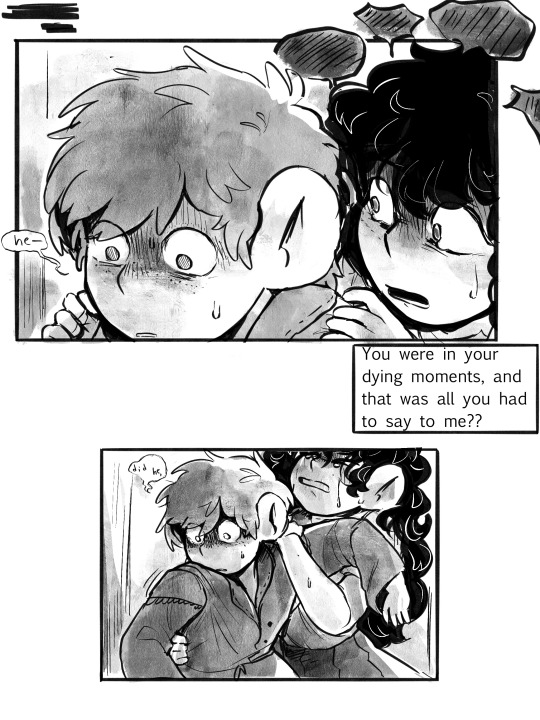
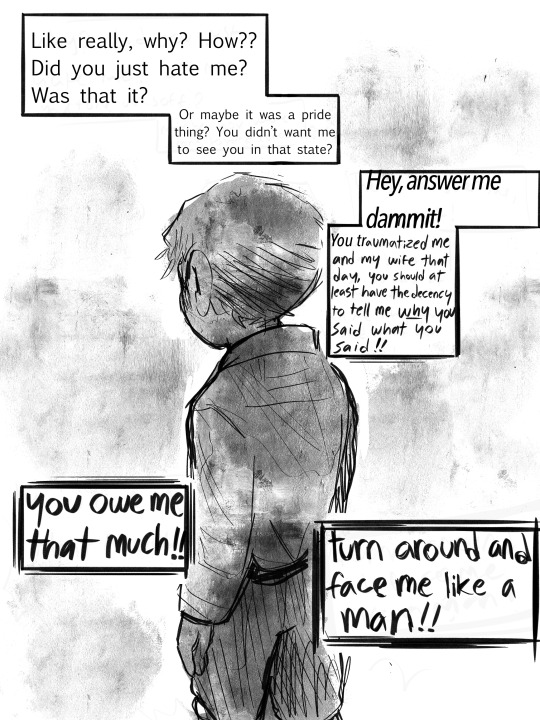
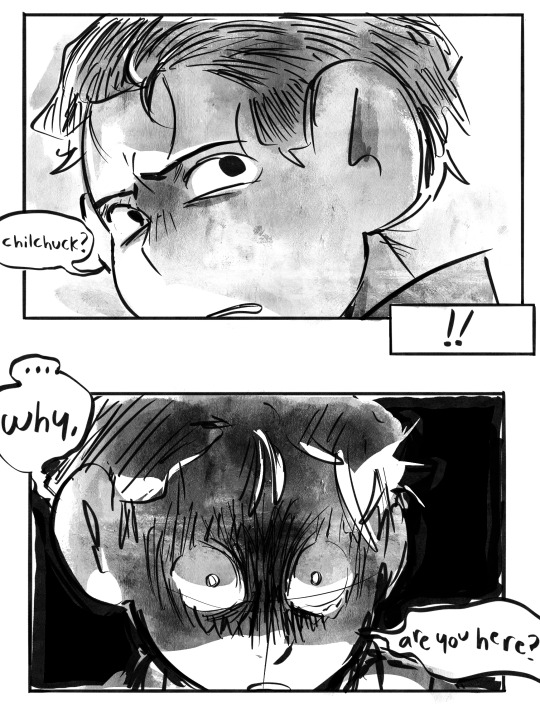
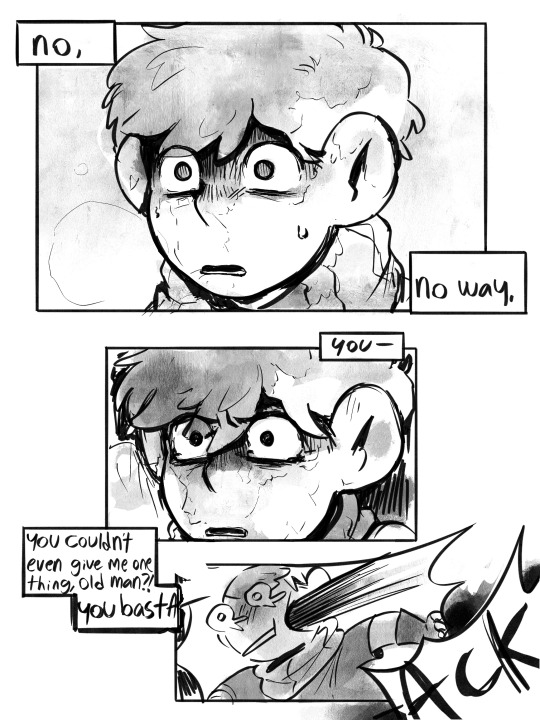
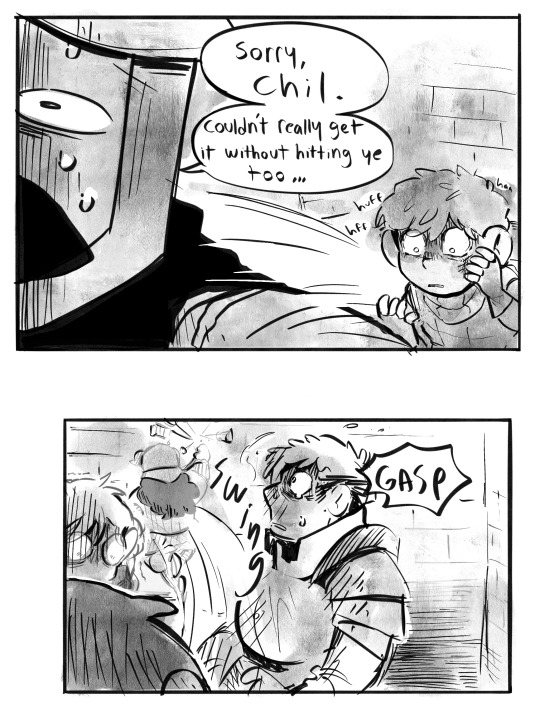
dad issues
+

(I think they were all fundamentally affected by what they saw and just collectively decided not to share the upsetting details)
5K notes
·
View notes
Text
REHABILITACIÓN DE FACHADAS Y PINTURA RINCON DE LA VICTORIA
Rehabilitación de Fachadas y Pintura en Rincón de la Victoria. En REPROBEN, somos especialistas en rehabilitación de fachadas y trabajos de pintura en Rincón de la Victoria y toda la Costa del Sol. Con años de experiencia en el sector de la construcción y el mantenimiento de edificios, ofrecemos soluciones profesionales, duraderas y estéticamente impecables para todo tipo de inmuebles. Servicios…
#añoreta#benagalbón#Benahavis#calidad y garantía#chilches#comunidad de vecinos rincón de la victoria#comunidades en rincón de la victoria#Desde villas hasta apartamentos:#el palo#empresa de pintores#empresa de pintores rincón de la victoria#empresa de pintura rincón de la victoria#empresa de rehabilitación de fachadas#empresa de rehabilitación de fachadas rincón de la victoria#especialistas en pintura exterior rincón de la victoria#Estepona#Fuengirola#la cala del moral#Málaga#mantenimiento de fachadas rincón de la victria#Marbella#Mijas#pide tu presupuesto gratuito para pintura exterior en rincón de la victoria#Pintamos fachadas#pintar casa rincón de la victoria#pintar comunidad rincón de la victoria#pintar comunidades en rincón de la Victoria#pintores en rincón de la victoria#pintores profesionales#pintura impermeabilizante rincón de la victoria
0 notes
Note
Do you have any references or pictures of the mounts in dungeon meshi? Like the monsters they use to traverse, similar to the ones shown in the pictures here
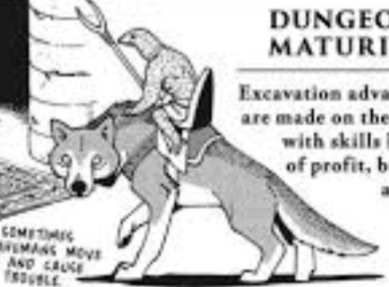
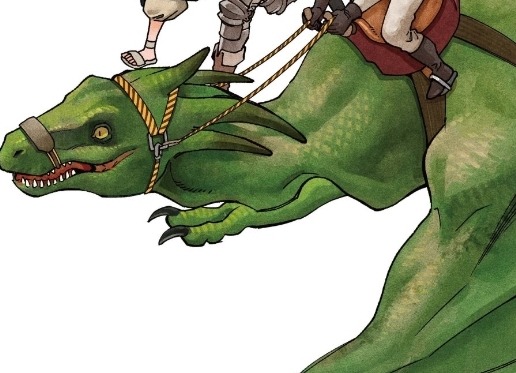
I think that first one is the only mount we see in dunmeshi and it's a lizard demihuman riding it. The second one is an illustration for another one of Kui's stories!
One time I got an related ask about orcs and Wargs
But the dullahan is a monster (spirit) that rides a horse (or a headless bicorn later on) actually I think all the horse monsters end up being ridden one way or another in the manga (unicorn, bicorn and kelpie. Kelpie ridding not a good idea)
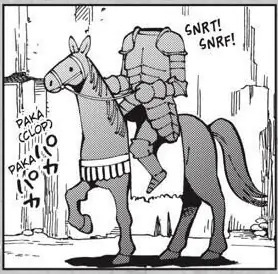
Maybe Kui wanted to stay somewhat realistic with how rideable her monsters are?
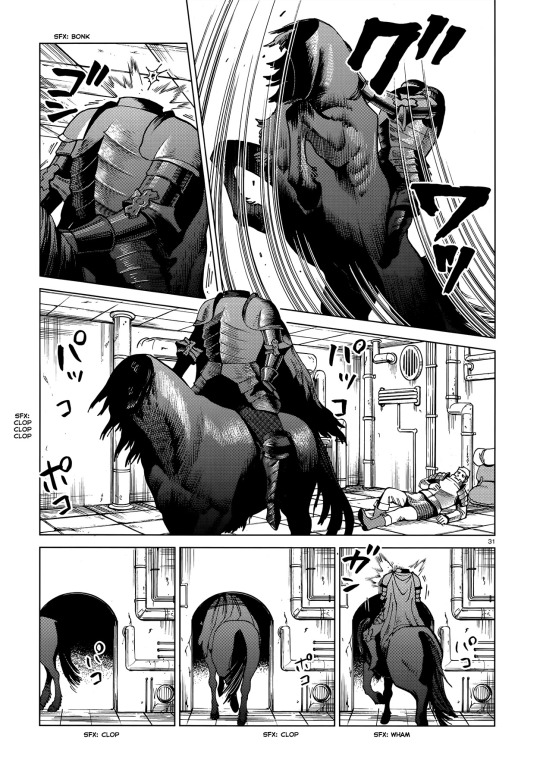
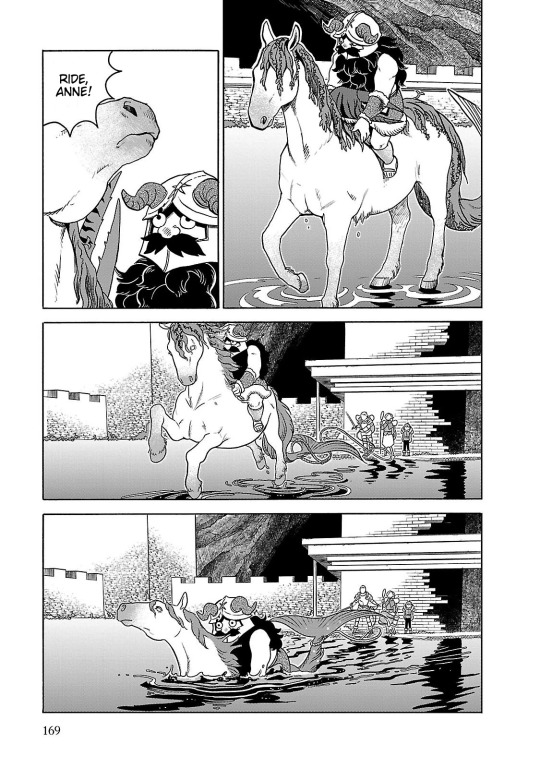
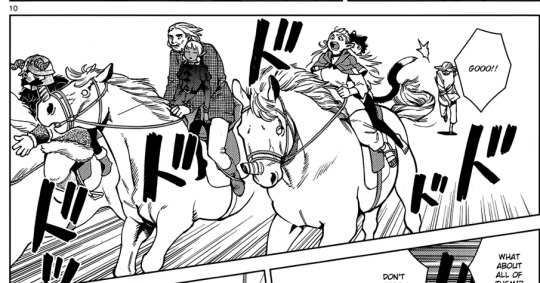
Here's some more dragon riding from the Dragon's School oneshot (Which I highly recommend)
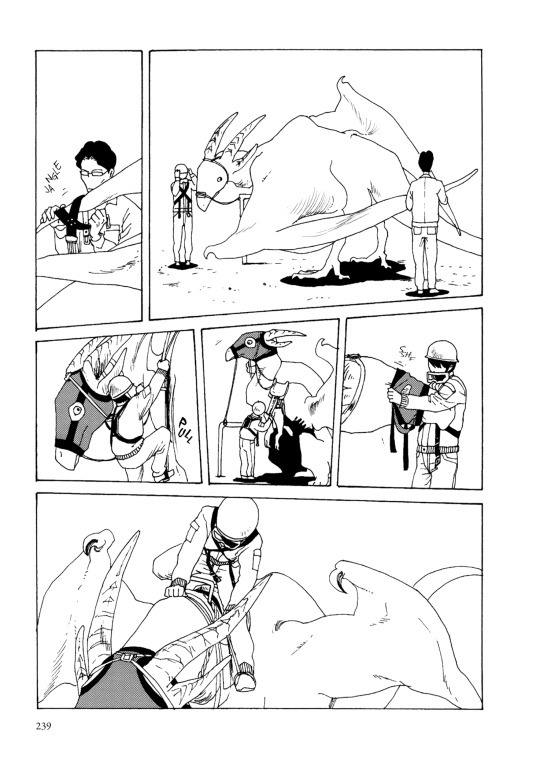
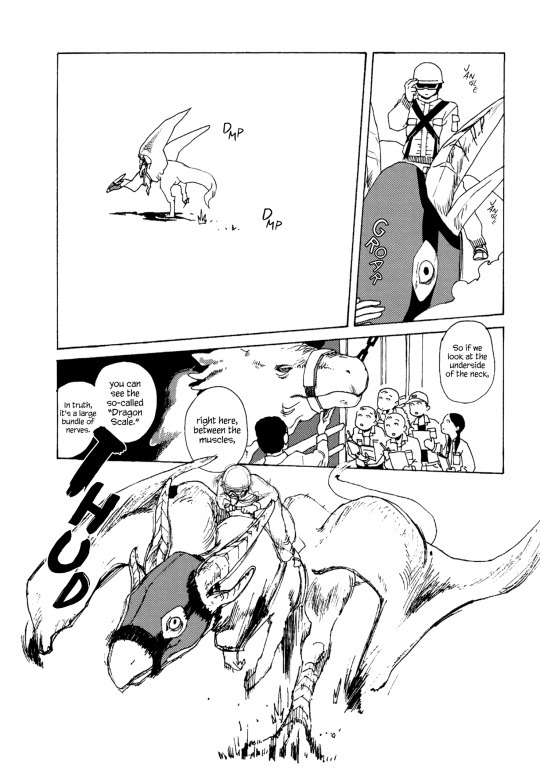
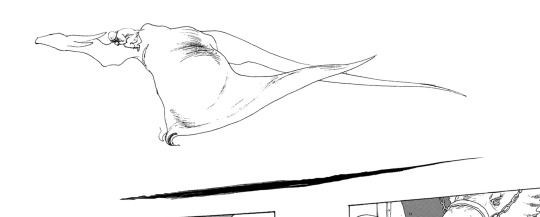
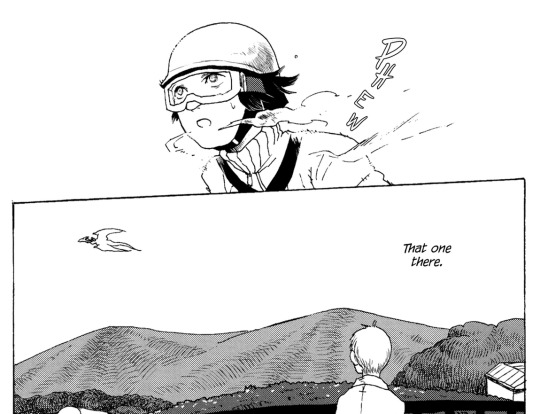
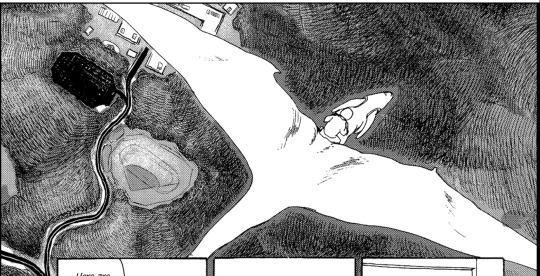
Dragon's School also touches on a point that Laios talks about, which I think wouldn't be the case if people could actually ride monsters in that world, which is how useful these creatures can be (In dunmeshi's case Laios says out loud they cant be used while still alive). That's one of the reasons he was fascinated by the Golden Kingdom
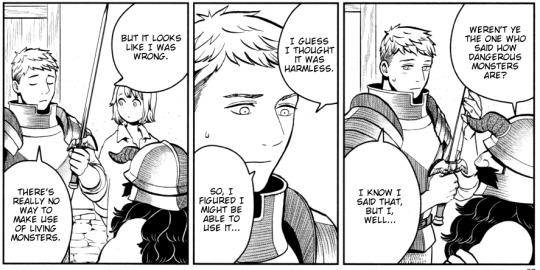
#ask#monsters#mounts#dungeon meshi spoilers#the dragon's school is on top of the mountain#janettorius#dungeon meshi#dragons
87 notes
·
View notes
Text
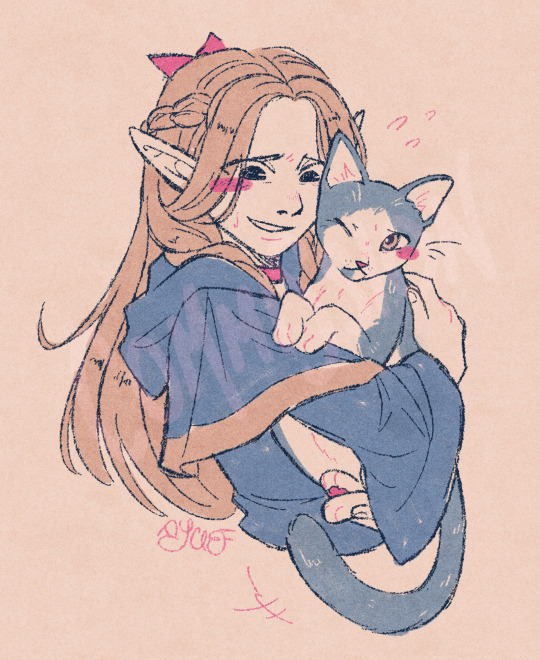
a companion piece to the chilchucks (link), comissioned by his other owner, @circeancity, of marcille with chilch's sister, ophelia !
[ID: a digital sketch of Marcille from Dungeon Meshi holding Ophelia, a grey tuxedo cat. Marcille is smiling nervously, and Ophelia is turning her face away, looking similarly nervous. the drawing is coloured in blue, yellow, and pink, over a peach background. /END ID]
91 notes
·
View notes
Text
For That One Guy On Tumblr, part 2
Chilchuck x !fem !Halffoot Reader
@dunmeshimeshi @leguink
Yes, union! What-" Chilchuck stopped and frowned. "Wait...how long had this dungeon been open when you entered?"
"...maybe six months? I joined on with a party dedicated to finding and destroying the mad mage instead of treasure hunting. How long has it been?"
There was a stunned silence.
Finally it was broken by Chilchuck whistling through his teeth. "pheeeeeeewwww, you've been here a long time then. It's been almost six years since this dungeon was discovered."
The tall man beamed. "Woooahhhh this is so cool! I guess it doesn't matter how long it's been, as long as the body isn't too damaged and everything is there the soul sticks around! That means if we preserved bodies in something like vinegar they could stay in stasis indefinitely!"
The elf rounded on him. "thats not- this poor person just found out she's been...gone for almost six years and that's your reaction??"
The tall man raised his hands defensively. "It could just have a lot of applications, okay? Has anyone even been ABLE to be revived after so long? No one thought it would be possible but clearly-" he gestured at you "she's living proof it is!" He stopped abruptly, as if realizing something. "Ah, sorry! What's your name? I'm Laois!"
Your mind whirled. How did this happen? What about the people you knew? Oh god, what about your sister? She'd be up near what...27 now? Was she technically the same age as you now? God she'd never let you live that down.
"I'm...y/n....six...six years? How is that even possible? Oh! Who wound up defeating the mad mage? Did they wind up being the ruler like the dead guy said?"
There was an awkward silence. Finally Laois said "ahh...hmmm... Well he's not been defeated yet...people have been trying all this time..."
"What...? How? We figured we had to get in fast before everyone else started flooding in but....six years? Has someone at least gotten close?"
A sudden pang of regret struck you. There was no hurry. Your party could have prepared more. You could have vetted your party members more....maybe you could have made it. And since Laois would definitely know if they had succeeded...they were either dead or given up. The thought gave you some small satisfaction.
You hoped it was a trap that did them in. Fuckers shouldn't have tossed you aside so easily.
Laois continued "but! I think we've got a solid shot at it now! So don't worry, we'll definitely defeat the mad mage!"
Chilchuck quietly snorted, and rolled his eyes at you.
The elf stepped in. "It's nice to meet you y/n! My name's Marcille." She pointed at the dwarf and then the cat girl and said "his name's Senshi, and she's Izutzumi."
"Nice...nice to meet you..." You stuttered out.
"Nice to meet you!" Senshi said, smiling up at you. Izutzumi just continued looking bored.
"Food is ready!" Senshi continued "now I'm sure you have more questions for us, but you must be starved from resurrecting and there's no rush. Let's eat a meal first and then we can talk. But! Before we eat you're going to need to wash up and get some fresh clothes. No sense in eating a meal with dirty hands."
You looked down at yourself, he was right, you were filthy and your clothes hung off you in tatters, grimy and soaked with disgusting water. Now that you paid attention, to your embarrassment you realized you definitely smelled.
Marcille hung up some blankets to give you some privacy so you could quickly rinse off, and you could hear them rustling around in packs and discussing what would fit you. The water felt amazing, and you realized even before your....death. you hadn't bathed in a very long time. You must have already absolutely reeked before you went into the ice.
After a few minutes Marcille popped back inside triumphantly brandishing a pair of pants, a shirt, and a...length of white fabric? The shirt looked like it would fit you, the pants....not so much.
"We found some clothes for you! Chilchuck had an extra shirt and I had some pants. We'll roll them up for now so you can go ahead and eat and then we can hem them up later."
Chilchuck interjected from outside the blankets. "I'm going to want that back at some point! That was my one extra shirt!"
Marcille ignored him and thrust the clothes at you. "Oh! And-" she dropped her voice to an embarrassed whisper. "I knew my um...underclothing wouldn't um...fit you...but I figured we could make a quick ah, fix using some fabric? And maybe a better one later?"
"Oh you mean wrap this around my chest as a makeshift bra? Sure we can do that." You didn't bother lowering your voice. Who gave a shit if some random guys found out women wore bras.
You quickly dressed, making a makeshift bra with the fabric that you were actually kind of proud of.
The pants ballooned out around your legs but it couldn't really be helped, and you could tailor them to you later. Surely they had at least a needle and some thread.
You felt optimistic for the first time. This could actually be doable. You could be useful enough to earn your keep, especially if they had plenty of food anyway. You were pretty good at drawing off and distracting bigger monsters so even with fewer traps you'd come in handy. This could really be your chance to carry on with the quest and succeed, or if they sent you back, oh well, you wouldn't be worse off than when you started.
Yeah, this could really work.
102 notes
·
View notes
Text
I dunno why I feel the need to express this but man I just cannot fathom how DOA chilch*ck/s*nshi shipping stuff hits me. Like I get NOTHING from it which is weird cuz I can usually muster up some connection from any given 2 char ship but oof bah boof does it lack any spark for me on any level that that alone fascinates me.
2 notes
·
View notes
Note
actuallyi wanna know more about zilch and rescent... also while i was typing this i almost typed "chilch" trying to type zilch and rescent

chilch................ Rescent and Zilch are childhood friends that met cuz rescent was apprenticing under the wizard for awhile :3 uhmmmmmmm Rescent is like that cuz it accidentally shadowed itself n so currently only exists as it's own shadow <- this is because it's bad at magic. lol. I think it was Zilch's actions that caused this to happen in a way tho.... but I haven't thought that part out very well so.
they're in some sort of relationship but god knows what it is. uhm. it's probably not particularly healthy. Rescent has been Zilch's only friend her entire life and she has like. 3 other close relationships besides it and it's her parents (died when she was young) and her auncle (weird relationship with him + he dies when she's a young adult) so. she's very clingy. Rescent cares for Zilch a looot but she's volatile and gets scared easily n starts doing insane shit when she's scared and it causes strain on their relationship. Rescent is often kind of a doormat tho 👍
afterrrr the wizard dies (<- zilch's auncle) Zilch's mental health goes really badly downhill. this is also around the same time Rescent accidentally shadows itself so it starts following Zilch around acting like her shadow because it's so dearly worried abt her but can't do much but keep her company. hummmmm my eyes are hurting and I can't think of what to say even tho there's def more
5 notes
·
View notes
Text
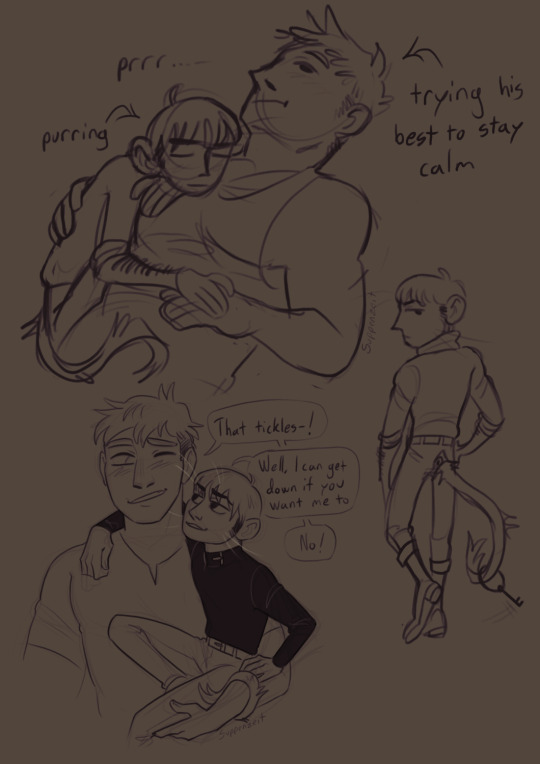
more chilaios because theyre really fun to draw
#my art#dungeon meshi#dunmeshi#chilaios#chilchuck only purrs when its just the two of them and hes being really cozy#most other times hes suppressing it#also. you mightve noticed that chilch tends to have his tail wrapped around laios in some way. this is intentional <3#hes bad with words so he shows affection with that instead. laios only sometimes notices it
272 notes
·
View notes
Text
Woa. Guys. Chilch-
i’ve been ruined
An incomplete list of things that employers commonly threaten that are 100% illegal in the United States
"We'll fire you if you tell others how much you're making" The National Labor Relations Act of 1935 specifically protects employees who discuss their own wages with each other (you can't reveal someone else's wages if you were given that information in the course of work, but you can always discuss your own or any that were revealed to you outside of work duties)
"If we can't fire you for [discussing wages/seeking reasonable accommodation/filing a discrimination complaint/etc], we'll just fire you for something else the next day." This is called pretextual termination, and it offers your employer almost no protection; if you are terminated shortly after taking a protected action such as wage discussion, complaints to regulatory agencies, or seeking a reasonable accommodation, you can force the burden onto your employer to prove that the termination wasn't retaliatory.
"Disparaging the company on social media is grounds for termination" Your right to discuss workplace conditions, compensation, and collective action carries over to online spaces, even public ones. If your employer says you aren't allowed to disparage the company online or discuss it at all, their social media policy is illegal. However, they can forbid releasing information that they're obligated to keep confidential such as personnel records, business plans, and customer information, so exercise care.
"If you unionize, we'll just shut this branch down and lay everyone off" Threatening to take action against a group that unionizes is illegal, full stop. If a company were to actually shut down a branch for unionizing, they would be fined very heavily by the NLRB and be opening themselves up to a class-action lawsuit by the former employees.
"We can have any rule we want, it's only illegal if we actually enforce it" Any workplace policy or rule that has a "chilling effect" on employees' willingness to exercise their rights is illegal, even if the employer never follows through on any of their threats.
"If you [protected action], we'll make sure you never work in this industry/city/etc again." Blacklisting of any kind is illegal in half the states in the US, and deliberately sabotaging someone's job search in retaliation for a protected action is illegal everywhere in the US.
"Step out of line and you can kiss your retirement fund/last paycheck goodbye." Your employer can never refuse to give you your paycheck, even if you've been fired. Nor can they keep money that you invested in a retirement savings account, and they can only claw back the money they invested in the retirement account under very specific circumstances.
"We'll deny that you ever worked here" not actually possible unless they haven't been paying their share of employment taxes or forwarding your withheld tax to the government (in which case they're guilty of far more serious crimes, and you might stand to gain something by turning them in to the IRS.) The records of your employment exist in state and federal tax data, and short of a heist that would put Oceans 11 to shame, there's nothing they can do about that.
102K notes
·
View notes
Text

VKS Calderería Industrial Málaga
VKS Calderería Industrial es un cluster de Ingeniería Metalúrgica con equipos de Técnicos Metalúrgicos expertos en Calderería Industrial, Calderas, Tolvas, Cisternas y Depósitos y cualquier tipo de Industrias, Ingenierías, Pymes y Empresas en Málaga
Visita nuestra web:
https://www.vkscaldereriaindustrialmalaga.es
Ofrecemos servicios en: Alameda, Alcaucín, Alfarnate, Alfarnatejo, Algarrobo, Algatocín, Alhaurín de la Torre, Alhaurín el Grande, Almáchar Almargen, Almayate, Almogía, Álora, Alozaina, Alpandeire, Antequera, Árchez, Archidona, Ardales, Arenas, Arriate, Atajate, Benadalid, Benahavís, Benajarafe, Benalauría, Benalmádena, Benamargosa, Benamocarra, Benaoján, Benarrabá, Cajiz, Caleta de Vélez, Campillos, Cañete la Real, Canillas de Aceituno, Canillas de Albaida, Carratraca, Cartajima, Cártama, Casabermeja, Casarabonela, Casares, Chilches, Coín, Colmenar, Comares, Cómpeta, Cortes de la Frontera, Cuevas Bajas, Cuevas de San Marcos, Cuevas del Becerro, Cútar, El Borge, El Burgo, Estepona, Faraján, Frigiliana, Fuengirola, Fuente de Piedra, Gaucín, Genalguacil, Guaro, Humilladero, Igualeja, Istán, Iznate, Jimera de Líbar, Jubrique, Júzcar, La Viñuela, Lagos, Macharaviaya, Málaga, Manilva, Marbella, Mezquitilla, Mijas, Moclinejo, Mollina, Monda, Montecorto, Montejaque, Nerja, Ojén, Parauta, Periana, Pizarra, Pujerra, Rincón de la Victoria, Riogordo, Ronda, Salares, Sayalonga, Sedella, Serrato, Sierra de Yeguas, Teba, Tolox, Torre del Mar, Torremolinos, Torrox, Totalán, Trapiche, Triana, Valle de Abdalajís, Valle-Niza, Vélez-Málaga, Villanueva de Algaidas, Villanueva de la Concepción, Villanueva de Tapia, Villanueva del Rosario, Villanueva del Trabuco, Yunquera.
0 notes
Photo
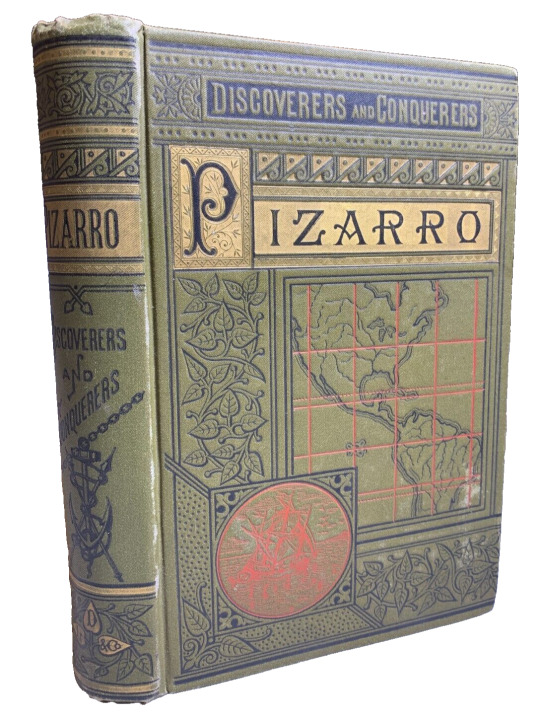
Antique Ornate Fancy Gilded Victorian Book PIZARRO Discovery & Conquest of Peru
Antique
1881
Ornate, Gilded, Embossed, Stunning!
7.25"T x 5" W
I package well and ship out daily!
Spanish conquest of the Inca Empire
32 languages
Article
Talk
Read
Edit
View history
Tools
From Wikipedia, the free encyclopedia
Spanish conquest of the Inca EmpirePart of the Spanish colonization of the Americas Spanish conquest of Peru
Date1532–1572Location
Western South America
Result
Spanish victory
Inca Empire destroyed
Last Inca emperor Atahualpa executed
Resistance broke out but ultimately destroyed
Territorial changesFormer Inca lands incorporated into the Spanish Empire
Belligerents
Spanish Empire (1537–54)
New Castile (1529–42)
New Toledo (1534–42)
Viceroyalty of Peru (1542–72)
Inca Empire (since 1533) Native allies
Cañari
Huancas
Chankas
Huaylas
Chachapoyas
Huáscaran Incas
Inca Empire (1532–36) Neo-Inca State (1537–72)Commanders and leaders
Francisco Pizarro X
Diego de Almagro X
Gonzalo Pizarro †
Hernando Pizarro †
Juan Pizarro †
Hernando de Soto
Sebastián de Benalcázar
Pedro de Alvarado
Francisco de Toledo
Pedro de Candia †
Chilche
Vilchumlay
Túpac Huallpa
Manco Inca (1533–36)
Paullu Inca
1st phase (1532–35):
Atahualpa
Quizquiz †
Chalcuchimac
Rumiñawi †
2nd phase (1536–72):
Manco Inca X
Sayri Túpac #
Titu Cusi #
Túpac Amaru I
Strength168 soldiers (1532) Unknown number of native auxiliaries +3,000 Spanish soldiers and 150,000 indigenous allies (1535)[1]100,000 soldiers (1532) 50,000 warriors (1535)[1]Casualties and losses7,700,000 deaths as a result of the conquest[2]
show
v
t
e
Spanish conquest of the Inca Empire
show
v
t
e
Spanish colonial campaigns
Inca EmpireInca society
Army
Agriculture
Architecture
Ayllu
Cuisine
Education
Engineering
Mythology
Religion
Roads
Inca history
Kingdom of Cusco
Inca Empire
History of Cusco
Inca–Chanka war
Chimor–Inca War
Invasion of Chile
Neo-Inca State
Civil War
Spanish conquest
v
t
e
Part of a series on the
History of Peru
show
By chronology
show
By political entity
show
By topic
show
See also
Peru portal
v
t
e
The Spanish conquest of the Inca Empire, also known as the Conquest of Peru, was one of the most important campaigns in the Spanish colonization of the Americas. After years of preliminary exploration and military skirmishes, 168 Spanish soldiers under conquistador Francisco Pizarro, along with his brothers in arms and their indigenous allies, captured the last Sapa Inca, Atahualpa, at the Battle of Cajamarca in 1532. It was the first step in a long campaign that took decades of fighting but ended in Spanish victory in 1572 and colonization of the region as the Viceroyalty of Peru. The conquest of the Inca Empire (called "Tahuantinsuyu"[3] or "Tawantinsuyu"[4] in Quechua, meaning "Realm of the Four Parts"),[5] led to spin-off campaigns into present-day Chile and Colombia, as well as expeditions to the Amazon Basin and surrounding rainforest.
When the Spanish arrived at the borders of the Inca Empire in 1528, it spanned a considerable area and was by far the largest of the four grand pre-Columbian civilizations. Extending southward from the Ancomayo, which is now known as the Patía River, in southern present-day Colombia to the Maule River in what would later be known as Chile, and eastward from the Pacific Ocean to the edge of the Amazonian jungles, it covered some of the most mountainous terrains on Earth. In less than a century, the Inca had expanded their empire from about 400,000 km2 (150,000 sq mi) in 1448 to 1,800,000 km2 (690,000 sq mi) in 1528, just before the arrival of the Spanish. This vast area of land varied greatly in culture and climate. Because of the diverse cultures and geography, the Inca allowed many areas of the empire to be governed under the control of local leaders, who were watched and monitored by Inca officials. Under the administrative mechanisms established by the Inca, all parts of the empire answered to, and were ultimately under the direct control of, the Inca Emperor.[6] Scholars estimate that the population of the Inca Empire was between 12 and 16 million.[7][8]
Some scholars, such as Jared Diamond, believe that while the Spanish conquest was undoubtedly the proximate cause of the collapse of the Inca Empire, it may very well have been past its peak and already in the process of decline. In 1528, Emperor Huayna Capac ruled the Inca Empire. He could trace his lineage back to a "stranger king" named Manco Cápac, the mythical founder of the Inca clan,[9]: 144 who, according to tradition, emerged from a cave in a region called Paqariq Tampu.
Huayna Capac was the son of the previous ruler, Túpac Inca, and the grandson of Pachacuti, the Emperor who, by conquest, had commenced the dramatic expansion of the Inca Empire from its cultural and traditional base in the area around Cusco. On his accession to the throne, Huayna Capac had continued the policy of expansion by conquest, taking Inca armies north into what is today Ecuador.[9]: 98 While he had to put down a number of rebellions during his reign, by the time of his death, his legitimacy was as unquestioned as was the primacy of Inca power.
Expansion had caused its own set of problems. Many parts of the empire retained distinct cultures, which were at best reluctant to become part of the greater imperial project. Due to its size, and the fact that all communication and travel had to take place by foot or by boat, the Inca Empire proved increasingly difficult to administer and govern, with the Inca Emperor having increasingly less influence over local areas.
Huayna Capac relied on his sons to support his reign. While he had many legitimate-born of his sister-wife, under the Inca system- and illegitimate children, two sons are historically important. Prince Túpac Cusi Hualpa, also known as Huáscar, was the son of Coya Mama Rahua Occllo of the royal line. The second was Atahualpa, an illegitimate son who was likely born of a daughter of the last independent King of Quitu, one of the states conquered by Huayna Capac during the expansion of the Inca Empire.[7] These two sons would play pivotal roles in the final years of the Inca Empire.
The Spanish conquistador Pizarro and his men were greatly aided in their enterprise by invading when the Inca Empire was in the midst of a war of succession between the princes Huáscar and Atahualpa.[9]: 143 Atahualpa seems to have spent more time with Huayna Capac during the years when he was in the north with the army conquering Ecuador. Atahualpa was thus closer to and had better relations with the army and its leading generals. When both Huayna Capac and his eldest son and designated heir, Ninan Cuyochic, died suddenly in 1528 from what was probably smallpox, a disease introduced by the Spanish into the Americas, the question of who would succeed as emperor was thrown open. Huayna had died before he could nominate the new heir.
At the time of Huayna Capac's death, Huáscar was in the capital Cuzco, while Atahualpa was in Quito with the main body of the Inca army. Huáscar had himself proclaimed Sapa Inca (i.e. "Only Emperor") in Cuzco, but the army declared loyalty to Atahualpa. The resulting dispute led to the Inca Civil War.[9]: 146–149
The conquistador Diego de Almagro, a native of the town of Almagro, one of the three partners in the conquest of Peru.
Chronology of the last years of the Inca Empire
[edit]
This section needs additional citations for verification. Please help improve this article by adding citations to reliable sources in this section. Unsourced material may be challenged and removed. Find sources: "Spanish conquest of the Inca Empire" – news · newspapers · books · scholar · JSTOR (September 2024) (Learn how and when to remove this message)
c. 1528 – Francisco Pizarro and Diego de Almagro make first contact with the Inca Empire at Tumbes, the northernmost Inca stronghold along the coast. The Inca Emperor Huayna Capac died from European-introduced smallpox. Death sets off a civil war between his sons: Atahualpa and Huáscar
1528–1529 – Pizarro returns to Spain where the Queen of Spain grants him the license to conquer Peru
1531–1532 – Pizarro's third voyage to Peru. Spaniards form a bond with the Natives (Huancas, Chankas, Cañaris and Chachapoyas) who were under the oppression of the Inca Empire, and Pizarro includes them among his troops to face the Incas. Atahualpa is captured by Spanish.
1533 – Almagro arrives; Atahualpa is executed after he orders Huáscar to be killed; Pizarro submits Cuzco and installs seventeen-year-old Manco Inca as new Inca Emperor
1535 – Pizarro founds the city of Lima; De Almagro leaves for present-day Chile
1536 – Gonzalo Pizarro steals Manco Inca's wife, Cura Olcollo. Manco rebels and surrounds Cuzco. Juan Pizarro is killed, and Inca general Quizo Yupanqui attacks Lima
1537 – Almagro seizes Cuzco from Hernando and Gonzalo Pizarro. Rodrigo Orgóñez sacks Vitcos and captures Manco Inca's son, Titu Cusi. Manco escapes and flees to Vilcabamba, which became the capital of the Neo-Inca State
1538 – Hernando Pizarro executes Diego de Almagro
1539 – Gonzalo Pizarro invades and sacks Vilcabamba; Manco Inca escapes but Francisco Pizarro executes Manco's wife, Cura Olcollo
1541 – Francisco Pizarro is murdered by Diego de Almagro II and other supporters of De Almagro
1544 – Manco Inca is murdered by supporters of Diego de Almagro. The Inca do not stop their revolt
1572 – Viceroy of Peru, Francisco Toledo, declares war on the Neo-Inca State; Vilcabamba is sacked and Túpac Amaru, the last Inca Emperor, is captured and executed in Cuzco. The Neo-Inca capital of Vilcabamba is abandoned; the Spanish remove inhabitants and relocate them to the newly established Christian town of San Francisco de la Victoria de Vilcabamba.[10]: xiii–xv
The conquistador Francisco Pizarro, a native of Trujillo.
Beginning of the conflict
[edit]
The civil war between Atahualpa and Huascar weakened the empire immediately prior to its struggle with the Spanish. Historians are unsure if a united Inca Empire would have defeated the Spanish in the long term due to factors such as the high mortality from disease and the resulting social disruption, and the superior military technology of the conquistadors, who possessed horses, dogs, metal armor, swords, cannons, and primitive, but effective, firearms.[11] Atahualpa appeared to be more popular with the people than his brother, and he was certainly more valued by the army, the core of which was based in the recently conquered northern province of Quito.
At the outset of the conflict, each brother controlled his respective domains, with Atahualpa secure in the north, and Huáscar controlling the capital of Cuzco and the large territory to the south, including the area around Lake Titicaca. This region had supplied large numbers of soldiers for Huáscar's forces. After a period of diplomatic posturing and jockeying for position, open warfare broke out. Huáscar seemed poised to bring the war to a rapid and decisive conclusion, as troops loyal to him took Atahualpa prisoner, while he was attending a festival in the city of Tumebamba. However, Atahualpa quickly escaped and returned to Quito. There, he was able to amass what is estimated to be at least 30,000 well-trained soldiers. While Huáscar managed to muster about the same number of soldiers, they were much less experienced.
Atahualpa sent his forces south under the command of two of his leading generals, Challcuchima and Quisquis, who won an uninterrupted series of victories against Huáscar that soon brought them to the very gates of Cuzco. On the first day of the battle for Cuzco, the forces loyal to Huáscar gained an early advantage. However, on the second day, Huáscar personally led an ill-advised "surprise" attack, of which the generals Challcuchima and Quisquis had advanced knowledge. In the ensuing battle, Huáscar was captured, and resistance completely collapsed. The victorious generals sent word north by chasqui messenger to Atahualpa, who had moved south from Quito to the royal resort springs outside Cajamarca. The messenger arrived with news of the final victory on the same day[citation needed] that Pizarro and his small band of adventurers, together with some indigenous allies, descended from the Andes into the town of Cajamarca.
Arrival of Pizarro
[edit]
The Famous Thirteen by Juan Lepiani
Francisco Pizarro and his brothers (Gonzalo, Juan, and Hernando) were attracted by the rumors of a rich and fabulous kingdom. They had left the then-impoverished Extremadura, like many migrants after them.[9]: 136
There lies Peru with its riches; Here, Panama and its poverty. Choose, each man, what best becomes a brave Castilian.
— Francisco Pizarro[9]: 116
In 1529, Francisco Pizarro obtained permission from the Spanish Monarchy to conquer the land they called Peru.[9]: 133
According to historian Raúl Porras Barrenechea, Peru is not a Quechuan nor Caribbean word, but Indo-European or hybrid. Unknown to Pizarro, as he was lobbying for permission to mount an expedition, his proposed enemy was being devastated by the diseases brought to the American continents during earlier Spanish contacts.
When Pizarro arrived in Peru in 1532, he found it vastly different from when he had been there just five years before. Amid the ruins of the city of Tumbes, he tried to piece together the situation before him. From two local boys, whom Pizarro had taught how to speak Spanish in order to translate for him, Pizarro learned of the civil war and of the disease that was destroying the Inca Empire.[10]
After four long expeditions, Pizarro established the first Spanish settlement in northern Peru, calling it San Miguel de Piura.[9]: 153–154
Francisco Pizarro meets with Atahualpa, 1532
When first spotted by the natives, Pizarro and his men were thought to be Viracocha Cuna or "gods". The Natives described Pizarro's men to the Inca. They said that capito was tall with a full beard and was completely wrapped in clothing. The Natives described the men's swords and how they killed sheep with them. The men did not eat human flesh, but rather sheep, lamb, duck, pigeons, and deer, and cooked the meat. Atahualpa was fearful of what the newly arrived white men were capable of. If they were runa quicachac or "destroyers of peoples," then he should flee. If they were Viracocha Cuna Runa allichac or "gods who are benefactors of the people," then he should not flee, but welcome them.[citation needed] The messengers went back to Tangarala, and Atahualpa sent Cinquinchara, an Orejon warrior, to the Spanish to serve as an interpreter.
After traveling with the Spanish, Cinquinchara returned to Atahualpa; they discussed whether or not the Spanish men were gods. Cinquinchara decided they were men because he saw them eat, drink, dress, and have relations with women. He saw them produce no miracles. Cinquinchara informed Atahualpa that they were small in number, about 170–180 men, and had bound the Native captives with "iron ropes". When Atahualpa asked what to do about the strangers, Cinquinchara advised that they be killed because they were evil thieves who would take whatever they wanted, and were "supai cuna" or "devils". He recommended trapping the men inside of their sleeping quarters and burning them to death.[12]
Capture of Atahualpa
[edit]
After his victory and the capture of his brother Huáscar, Atahualpa was fasting in the Inca baths outside Cajamarca. Pizarro and his men reached the city on 15 November 1532.
Pizarro sent Hernando de Soto to the Atahualpa's camp. De Soto rode to meet Atahualpa on his horse, an animal that Atahualpa had never seen before.[note 1] With one of his young interpreters, Soto read a prepared speech to Atahualpa telling him that they had come as servants of God to teach them the truth about God's word.[13] He said he was speaking to them so that they might:
"lay the foundation of concord, brotherhood, and perpetual peace that should exist between us, so that you may receive us under your protection and hear the divine law from us and all your people may learn and receive it, for it will be the greatest honor, advantage, and salvation to them all."
Additionally, they invited the Inca leader to visit Pizarro at his quarters along the Cajamarca plaza. When De Soto noticed Atahualpa's interest in his horse, he put on a display of "excellent horsemanship" in close proximity. Atahualpa displayed hospitality by serving refreshments.[9]: 166–170 [14]
Atahualpa responded only after Francisco Pizarro's brother, Hernando Pizarro, arrived. He replied with what he had heard from his scouts, that the Spanish had been killing and enslaving countless numbers of people and civilians on the coast. Pizarro denied the report and Atahualpa, with limited information, reluctantly let the matter go. At the end of their meeting, the men agreed to meet the next day at Cajamarca.[10]
The Inca–Spanish confrontation in the Battle of Cajamarca left thousands of natives dead
The next morning, on 16 November 1532, Pizarro had arranged an ambuscade around the Cajamarca plaza, where they were to meet. At this point, Pizarro had in total 168 men under his command: 106 on foot and 62 on horseback. When Atahualpa arrived with about 6,000 unarmed followers, Friar Vincente de Valverde and the interpreter Felipillo met them and proceeded to "expound the doctrines of the true faith" (requerimiento) and seek his tribute as a vassal of King Charles. The unskilled translator likely contributed to problems in communication. The friar offered Atahualpa the Bible as the authority of what he had just stated. Atahualpa stated, "I will be no man's tributary."[9]: 173–177
Pizarro urged attack, starting the Battle of Cajamarca. The battle began with a shot from a cannon and the battle cry "Santiago!"[14] The Spaniards unleashed volleys of gunfire at the vulnerable mass of Incas and surged forward in a concerted action. Pizarro also used devastating cavalry charges against the Inca forces, which stunned them in combination with the supporting gunfire.[9]: 177–179 However, many of the guns used by the Spaniards were hard to use in close-quarters combat. The effect was devastating, and the shocked Incas offered such feeble resistance that the battle has often been labeled a massacre, with the 2,000 Incas slain and the Spanish with only one soldier wounded.
Though the historical accounts relating to the circumstances vary, the true Spanish motives for the attack seemed to be a desire for loot and flat-out impatience. The Inca likely did not adequately understand the conquistadors' demands.[15] Pizarro knew that his forces were badly outnumbered but that capturing the Emperor and holding him hostage would give him a key edge.
The majority of Atahualpa's troops were in the Cuzco region along with Quisquis and Challcuchima, the two generals he trusted the most. This was a major disadvantage for the Inca. Their undoing also resulted from a lack of self-confidence, and a desire to make public demonstration of fearlessness and godlike command of situation.[14] The main view is that the Inca were eventually defeated due to inferior weapons, 'open battle' tactics, disease, internal unrest, the bold tactics of the Spanish, and the capture of the Inca's Emperor. Spanish armor was very effective against most of the Andean weapons, though it was not entirely impenetrable to maces, clubs, or slings.[16][17] Later, most natives adapted in 'guerrilla fashion' by only shooting at the legs of the conquistadors if they happened to be unarmored.[18] However, ensuing hostilities such as the Mixtón Rebellion, Chichimeca War, and Arauco War would require that the conquistadors ally with friendly tribes in these later expeditions.
By February 1533, Almagro had joined Pizarro in Cajamarca with an additional 150 men with 50 horses.[9]: 186–194
After the Spanish captured Atahualpa at the massacre at Cajamarca, they allowed his wives to join him, and the Spanish soldiers taught him the game of chess.[19]: 215, 234 During Atahualpa's captivity, the Spanish, although greatly outnumbered, forced him to order his generals to back down by threatening to kill him if he did not. According to the Spanish envoy's demands, Atahualpa offered to fill a large room with gold and promised twice that amount in silver. While Pizarro ostensibly accepted this offer and allowed the gold to pile up, he had no intention of releasing the Inca. He needed Atahualpa's influence over his generals and the people in order to maintain the peace. The treasure began to be delivered from Cuzco on 20 December 1532 and flowed steadily from then on. By 3 May 1533 Pizarro received all the treasure he had requested; it was melted, refined, and made into bars.[14] Hernando Pizarro went to gather gold and silver from the temples in Pachacamac in January 1533, and on his return in March,[19]: 237 captured Chalcuchimac in the Jauja Valley. Francisco Pizzaro sent a similar expedition to Cuzco, bringing back many gold plates from the Temple of the Sun.
One of the main events in the conquest of Peru was the death of Atahualpa, the last Sapa Inca on 29 August 1533
The question eventually came up of what to do with Atahualpa; both Pizarro and Soto reportedly spoke against killing him, but the other Spaniards were loud in their demands for death. False interpretations from the interpreter Felipillo made the Spaniards paranoid. They were told that Atahualpa had ordered secret attacks and his warriors were hidden in the surrounding area. Soto went with a small force to scout for the hidden army, and the show trial of Atahualpa was held in his absence. Among the charges were polygamy, incestuous marriage, and idolatry, all frowned upon in Catholicism but common in Inca culture and religion.
The men who were against Atahualpa's conviction and murder argued that he should be judged by King Charles since he was the sovereign prince. Atahualpa was forced to submit to baptism to avoid being burned at the stake and in the hopes of one day rejoining his army and killing the Spanish; they referred to him as Francisco for the purposes of the ritual. On 29 August 1533 the Spanish captors murdered Atahualpa by garrotting. He was buried with Christian rites in the church of San Francisco at Cajamarca, but was soon disinterred. His body was recovered, probably at his prior request, and borne to its final resting place in Quito. Upon de Soto's return, he was furious; he had found no evidence of any secret gathering of Atahualpa's warriors.[14]
Pizarro advanced with his army of 500 Spaniards toward Cuzco, accompanied by Chalcuchimac. The latter was burned alive in the Jauja Valley, accused of secret communication with Quizquiz, and organizing resistance. Manco Inca Yupanqui joined Pizarro after the death of Túpac Huallpa. Pizarro's force entered the heart of the Tawantinsuyu on 15 November 1533.[9]: 191, 210, 216
Benalcázar, Pizarro's lieutenant and fellow Extremaduran, had already departed from San Miguel with 140 foot soldiers and a few horses on his conquering mission to Ecuador. At the foot of Mount Chimborazo, near the modern city of Riobamba (Ecuador) he met and defeated the forces of the great Inca warrior Rumiñawi with the aid of Cañari tribesmen who served as guides and allies to the conquering Spaniards. Rumiñahui fell back to Quito, and, while in pursuit of the Inca army, Benalcázar was joined by five hundred men led by Guatemalan Governor Pedro de Alvarado. Greedy for gold, Alvarado had set sail for the south without the crown's authorization, landed on the Ecuadorian coast, and marched inland to the Sierra. Finding Quito empty of its people's treasure, Alvarado soon joined the combined Spanish force. Alvarado agreed to sell his fleet of twelve ships, his forces, plus arms and ammunition, and returned to Guatemala.[9]: 224–227 [19]: 268–284
Rebellion and reconquest
[edit]
After Atahualpa's murder, Pizarro installed Atahualpa's brother, Túpac Huallpa, as a puppet Inca ruler, but he soon died unexpectedly, leaving Manco Inca Yupanqui in power. He began his rule as an ally of the Spanish and was respected in the southern regions of the empire, but there was still much unrest in the north near Quito where Atahualpa's generals were amassing troops. Atahualpa's murder meant that there was no hostage left to deter these northern armies from attacking the invaders. Led by Atahualpa's generals Rumiñahui, Zope-Zupahua and Quisquis, the native armies were finally defeated, effectively ending any organized rebellion in the north of the empire.[9]: 221–223, 226
Manco Inca initially had good relations with Francisco Pizarro and several other Spanish conquistadors. However, in 1535 he was left in Cuzco under the control of Pizarro's brothers, Juan and Gonzalo, who so mistreated Manco Inca that he ultimately rebelled. Under the pretense of recovering a statue of pure gold in the nearby Yucay valley, Manco was able to escape Cuzco.[9]: 235–237
Spaniards executing Tupac Amaru I.
Manco Inca hoped to use the disagreement between Almagro and Pizarro to his advantage and attempted the recapture of Cuzco starting in April 1536. The siege of Cuzco was waged until the following spring, and during that time Manco's armies managed to wipe out four relief columns sent from Lima, but was ultimately unsuccessful in its goal of routing the Spaniards from the city. The Inca leadership did not have the full support of all its subject peoples and furthermore, the degrading state of Inca morale coupled with the superior Spanish siege weapons soon made Manco Inca realize his hope of recapturing Cuzco was failing. Manco Inca eventually withdrew to Tambo.[9]: 239–247
Archaeological evidence of the rebellion incident exists, showing that the Spanish conquistadors were aided by native Indian allies. The remains of about 70 men, women, and adolescents were found in the path of a planned expressway near Lima in 2007. Forensic evidence suggests that European weapons killed some of the natives, probably during the uprising in 1536,[20] but that the vast majority had been killed by local, indigenous weapons.[21]
After the Spanish re-occupied Cuzco, Manco Inca and his armies retreated to the fortress at Ollantaytambo where he, for a time, successfully launched attacks against Pizarro based at Cuzco and even managed to defeat the Spanish occupiers in an open battle.[9]: 247–249
When it became clear that defeat was imminent, Manco Inca retreated further to the mountainous region[9]: 259 of Vilcabamba and established the small Neo-Inca State, where Manco Inca and his successors continued to hold some power for several more decades. His son, Túpac Amaru, was the last Inca, being killed by the Spanish in 1572.
In total, the conquest took about forty years to complete. Many Inca attempts to regain their empire had occurred, but none had been successful. Thus the Spanish conquest was achieved, aided by factors like smallpox and a great communication and cultural divide. The Spaniards destroyed much of the Inca culture and imposed Spanish culture onto the native population.
Engraving depicting the Spanish conquistador Francisco Pizarro exposing before King Carlos I of Spain the evidence of the discovery of the fabulous Empire of the Incas.
Aftermath
[edit]
Pizarro and his followers founding Lima
A struggle for power resulted in a long civil war between Francisco Pizarro and Diego de Almagro in which Almagro was killed. Almagro's loyal followers and his descendants later avenged his death by killing Pizarro in 1541. This was done inside the palace of Francisco Pizarro in a fight to the death by these assassins, most of which were former soldiers of Diego de Almagro who were stripped of title and belongings after his death.[22]
Despite the war, the Spaniards did not neglect the colonizing process. Spanish royal authority on these territories was consolidated by the creation of an Audiencia Real, a type of appellate court. In January 1535, Lima was founded,[23] from which the political and administrative institutions were to be organized. In 1542, the Spanish created the Viceroyalty of New Castile, that shortly after would be called Viceroyalty of Peru. Nevertheless, the Viceroyalty of Peru was not organized until the arrival of a later Viceroy, Francisco de Toledo, in 1569. Toledo ended the indigenous Neo-Inca State in Vilcabamba, executing the Inca Túpac Amaru. He resettled the indigenous people in Spanish-style settlements in a process called reductions, promoted economic development using commercial monopoly and increased the production of the silver mines of Potosí, using an Inca institution of forced labor for mandatory public service called mita.
The integration of Spanish culture into Peru was carried out not only by Pizarro and his other captains, but also by the many Spanish who also came to Peru to exploit its riches and inhabit its land. These included many different kinds of immigrants such as Spanish merchants, peasants, artisans, and Spanish women. Another element that the Spanish brought with them were African slaves to work alongside captive Incas for use in labor with things such as agriculture and mining for silver.[24] These people all brought with them their own pieces of Spanish culture to integrate into Peruvian society.
Effects of the conquest on the people of Peru
[edit]
The long-term effects of the arrival of the Spanish on the population of South America were catastrophic. While this was the case for every group of Native-Americans invaded by Europeans during this time period, the Inca population suffered an exceptionally dramatic and rapid decline following contact. The population decline for the Inca Empire from 1520 to 1571 is roughly estimated at from 10 to 15 million in 1520 to less than 3 million in 1570 with the population still declining after 1570.[25]
The single greatest cause of the decimation of native populations was Old World infectious diseases, carried by colonists and conquistadors. As these were new to the natives, they had no acquired immunity and suffered very high rates of death. More died of disease than any army or armed conflict.[26] As the Inca did not have as strong a writing tradition as the Aztec or Maya, it is difficult for historians to estimate population decline or any events after conquest. But, it is sometimes argued, and equally disputed among scholars that the Inca began to contract these diseases several years before the Spanish appeared in the region, as it was possibly carried to their empire by traders and travelers. The outbreak, argued to be hemorrhagic smallpox, reached the Andes in 1524. While numbers are unavailable, Spanish records indicate that the population was so devastated by disease that they could hardly resist the foreign forces.
Historians differ as to whether the illness of the 1520s was smallpox; a minority of scholars claim that the epidemic was due to an indigenous illness called Carrion's disease. In any case, a 1981 study by N. D. Cook the shows that the Andes suffered from three separate population declines during colonization. The first was of 30–50 percent during the first outbreak of smallpox. When a measles outbreak occurred, there was another decline of 25–30 percent. Finally, when smallpox and measles epidemics occurred together, which occurred from 1585 to 1591, a decline of 30–60 percent occurred. Collectively these declines amounted to a decline of 93 percent from the pre-contact population in the Andes region.[27] Mortality was particularly high among children, ensuring that the impact of the epidemics would extend to the next generation.[5]
Beyond the devastation of the local populations by disease, they suffered considerable enslavement, pillaging and destruction from warfare. The Spanish took thousands of women from the local natives to use as servants and concubines. As Pizarro and his men took over portions of South America, they plundered and enslaved countless people. Some local populations entered into vassalage willingly, to defeat the Inca. Native groups such as the Huanca, Cañari, Chanka, and Chachapoya fought alongside the Spanish as they opposed Inca rule. The basic policy of the Spanish towards local populations was that voluntary vassalage would yield safety and coexistence, while continued resistance would result in more deaths and destruction.[28]
Another significant effect on the people in South America was the spread of Christianity. As Pizarro and the Spanish subdued the continent and brought it under their control, they forcefully converted many to Christianity, claiming to have educated them in the ways of the "one true religion."[29][30] With the depopulation of the local populations along with the capitulation of the Inca Empire, the Spanish missionary work after colonization began was able to continue unimpeded. It took just a generation for the entire continent to be under Christian influence.[7]
Environmental impact
[edit]
The arrival of the Spanish also had an unexpected impact on the land itself. Recent research points out that the Spanish conquest altered Peru's shoreline.[31] Before the Spaniards arrived, inhabitants of the arid northern Peruvian coast clad massive sandy ridges with an accidental form of "armor", millions of discarded mollusk shells, which protected the ridges from erosion for nearly 4700 years prior to the Spanish arrival, and produced a vast corrugated landscape that is visible from space. This incidental landscape protection came to a swift end, however, after diseases brought by Spanish colonists decimated the local population and after colonial officials resettled the survivors inland, without humans to create the protective covering, newly formed beach ridges simply eroded and vanished.[32] According to archaeologist Torben Rick, parts of the northern coast of Peru may look completely natural and pristine, "but if you rewind the clock a couple of millennia, you see that people were actively shaping this land by creating beach ridge systems".[33]
0 notes